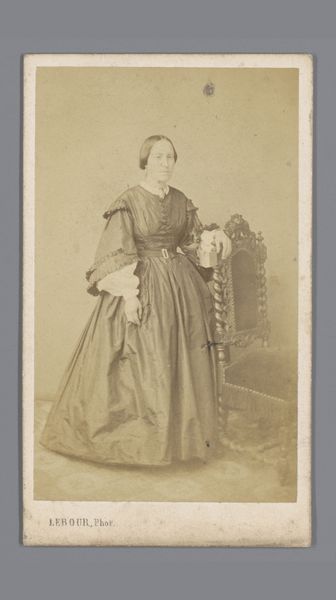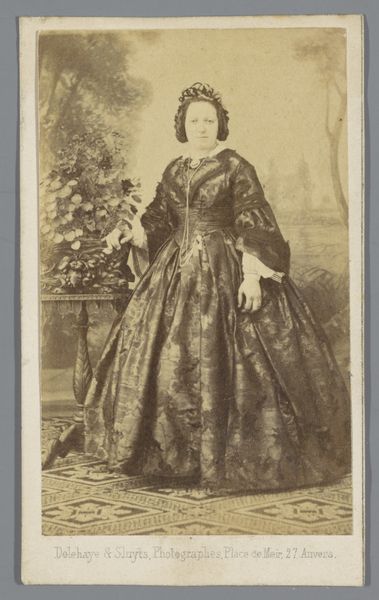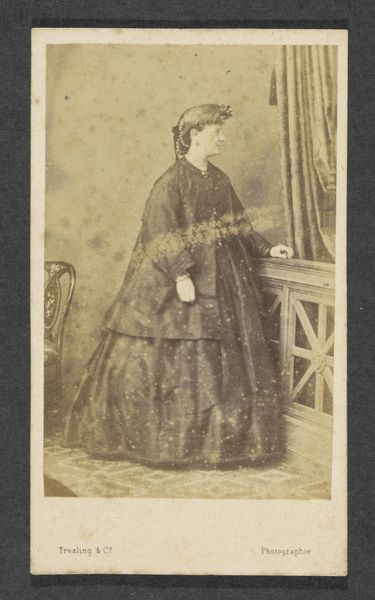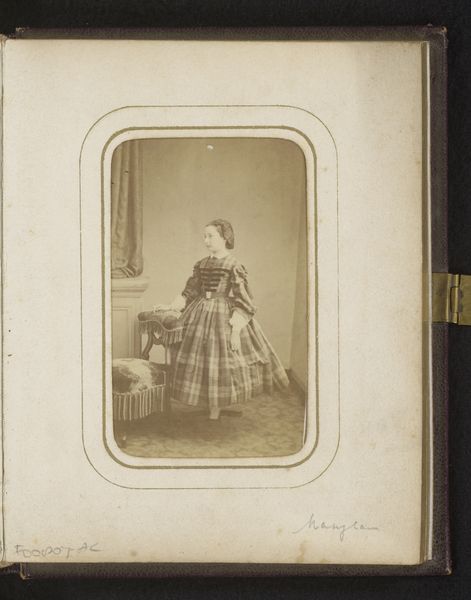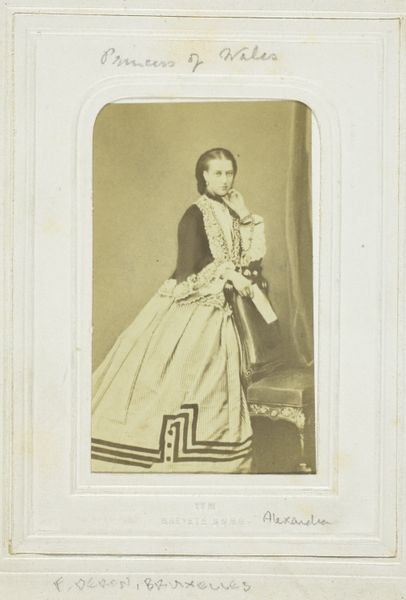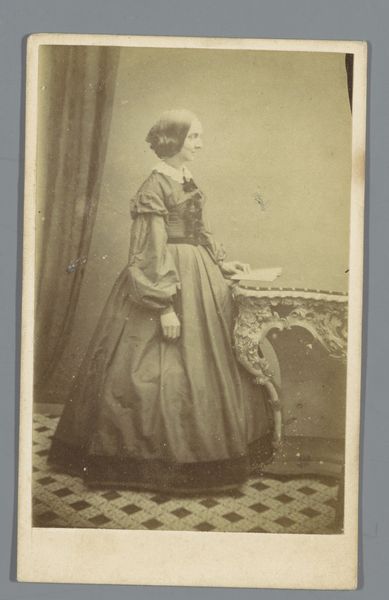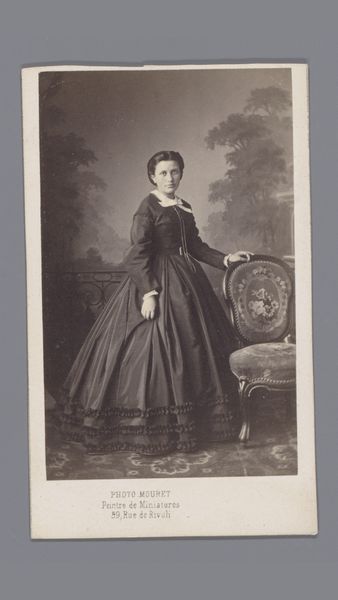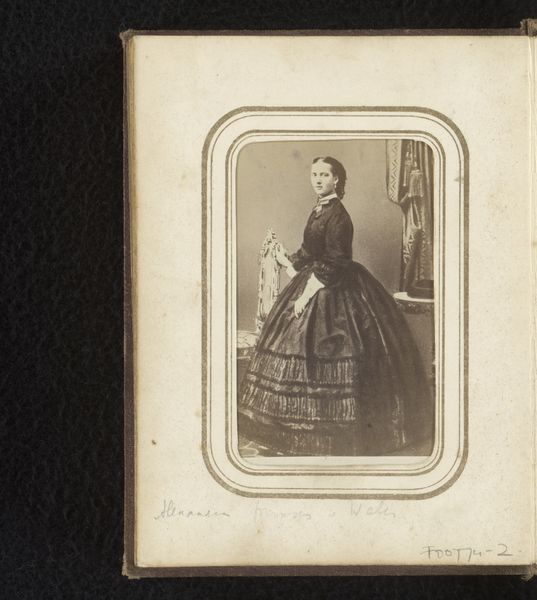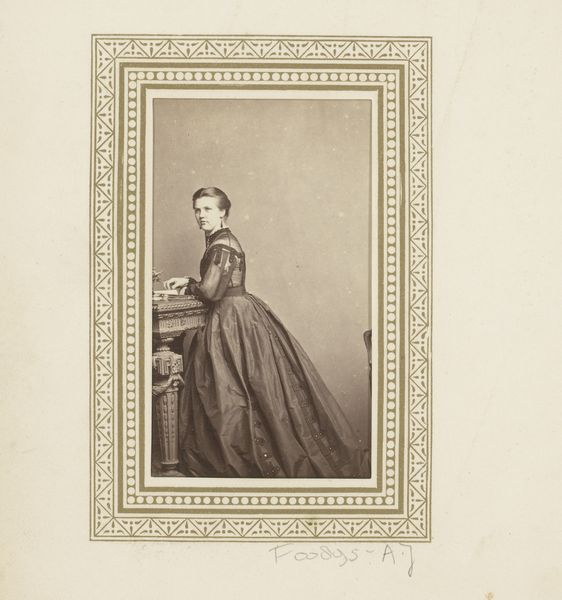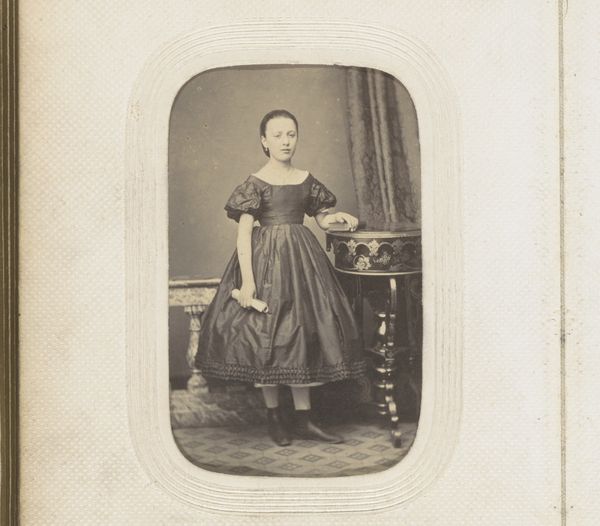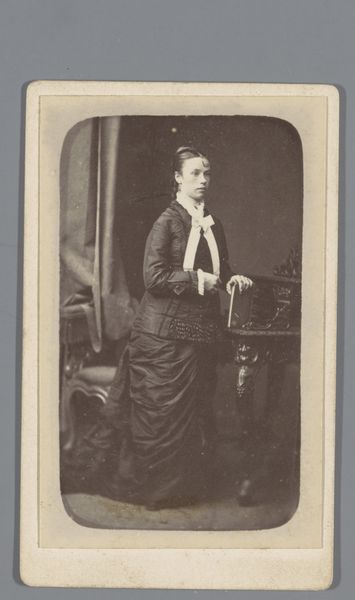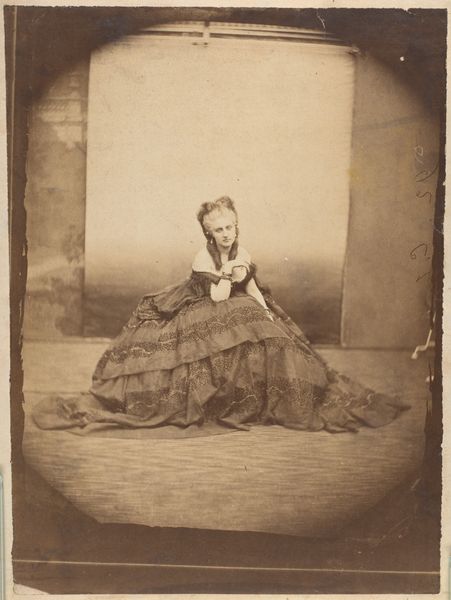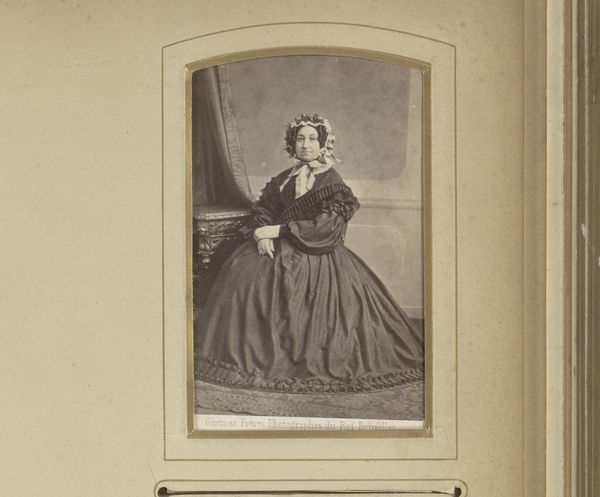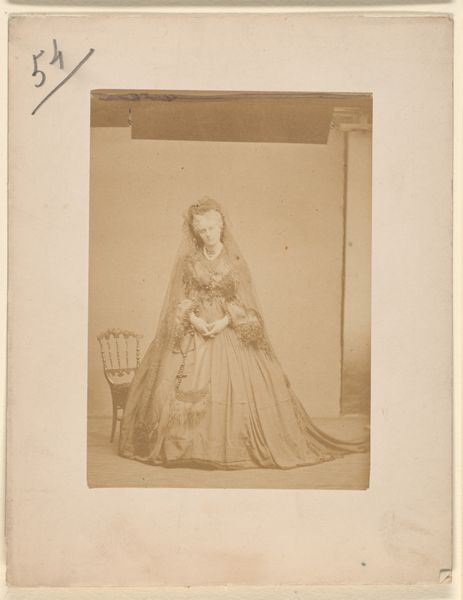
Fotoreproductie van een schilderij van een portret van een onbekende zittende vrouw 1850s - 1860s
0:00
0:00
Dimensions: height 80 mm, width 57 mm, height 105 mm, width 62 mm
Copyright: Rijks Museum: Open Domain
Editor: Here we have "Fotoreproductie van een schilderij van een portret van een onbekende zittende vrouw," a gelatin silver print from the 1850s or 60s by Hermanus Philippus Jacobus Schuiten, currently at the Rijksmuseum. There's something so romantic and wistful about it – the woman gazing upwards, almost as if in a daydream. What do you see in this piece? Curator: The Romantic style certainly informs this work, especially its idealism and sentimentality. Yet I'm compelled to think about it through a feminist lens. She is seated and gazing upward, towards a metaphorical freedom, while simultaneously confined by her garments and the implied social constraints of her time. This period also coincides with rising social movements and evolving discussions of female representation. What tensions do you see arising from that contrast? Editor: That's interesting. I hadn't really considered the constraints versus aspirations dynamic. Her gaze is hopeful, but her posture does seem somewhat demure. I guess it makes me wonder if the image is presenting an idealized vision or hinting at a desire for something more for women of that era. Curator: Exactly! We need to think critically about the gaze of the photographer, too. What story were they trying to tell about this woman, and how might that contrast with her own internal narrative? Photography itself was a burgeoning technology; how does it play into capturing—or perhaps constructing—female identity? Editor: So, it's not just a pretty picture; it’s a commentary on gender roles and the power dynamics of the time? Curator: Precisely. Consider this: could the photograph itself, as a relatively new and accessible medium, be interpreted as a symbol of the changing roles of women in society? How were women beginning to participate in these shifts in visual representation and potentially seizing the means of creative production? Editor: Wow, I will definitely look at 19th-century portraits differently now. Thanks for opening my eyes! Curator: My pleasure. It’s by engaging in critical dialogue like this that we truly understand the depth and power of art.
Comments
No comments
Be the first to comment and join the conversation on the ultimate creative platform.
